Exozodis
N Scott ARC
JPL 2017
Solar System zodiacal light “zodi”
a < 0.3 – 5 AU
L ≈ \(10^{-7}\) LꙨ
λ ≈ 19µm
T ≈ 270 K
M ≈ \(10^{-8}\) - \(10^{-9}\) MꚚ
Short-period comets
Collisional grinding
PR drag transport
Sublimation and pile-up
Grains have complex and varied composition


Exozodiacal Disks
- Not to be confused with debris disks
- Require interferometry to detect
- High levels (100-1000 zodi) even in >100 Myr systems
- Confound the detection of exoEarths
- Probe the structure of inner system
1 AU terrestrial planet with gap
0.5 – 1.5 AU warm dust disk 500K
0.1 – 0.5 AU hot dust disk > 1000K
Center A0 star @ 10 pcc
< 100K
100 AU
100-1400K
< 10 AU
HZ

Resonant structures could indicate planets indirectly [7]
Zodi levels of dust affect Earth detection
Our disk is the most luminous object in SS after the Sun.
Earth would be a clump in the zodi at visible and IR [1]
10-20 zodi would compromise exoEarth detection [2,3] Interferometric, astrometric, direct, photometric, ...
exoEarth detection is divided by factor of 2 for exozodi level increase of 10 [5]
exoEarth detection becomes challenging if exozodi level is ~20 zodis and clumpy [4]
\(\geq\)10% of Gyr old MS stars may have enough exozodi dust to complicate exoEarth imaging [6]
Observing Limits
Spectro-photometry
- Difficult to calibrate, poor stellar model accuracy
- Hard to reach <1% stellar flux photometric accuracy in M/NIR
Long baseline Interferometry
- Limited to bright targets
- Currently limited to many 100s or 1000x zodi
LBTI
- Limited to bright and close sources
- Limited by AO residuals (λ/r0)
Direct Imaging
- Inner working angle too large
- Contrast difficult
Speckle
- Has potential, but requires aperture masking to reach inner working angle
- Complements interferometry
Interferometry is the only way to detect exozodis
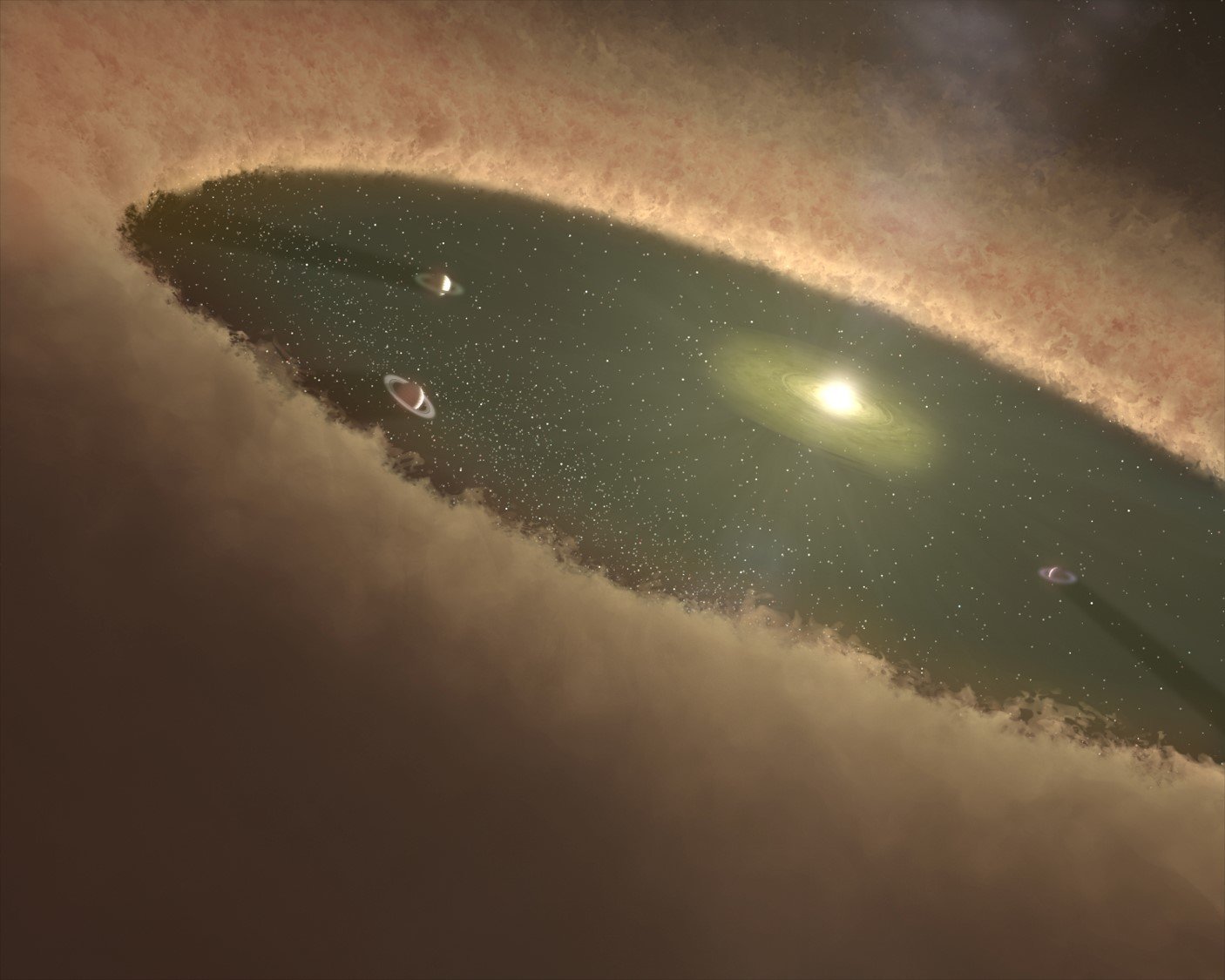
- IRAS, ISO, Spitzer, & WISE
- KIN
- FLUOR/JouFLU
- VLTI/PIONIER/MIDI
- LBTI
What's been used...
-
FIR
- Limited sensitivity
- Cannot resolve > 300K dust
- Limited by calibration and photosphere model accuracy
- MIR
- KIN observed 47 stars to the 150 zodi level
- VLTI/MIDI and nulling can detect MIR excesses
- NIR
- VLTI
- CHARA/FLUOR/JouFLU

FIR/MIR
- Spitzer and WISE found ~1% of young systems had exozodis [6]
- 1-2% have excess at 8.5-12um [8,9,10,11]
- ~12% have excess at 30-34um [12]
LBTI N-band observation
- \(\eta\) Crv suggests dust very close to the star (79mas, 1.4AU) [13]
KIN [14]
- 5/47 had 8-9um excess
-
All earlier than F2
-
Indications that dust is close to star

NIR
VLTI - PIONIER
Ertel et al 2014 merged FLUOR+PIONIER samples (n~125) reaching 0.25% precision
-
Rate decreases across spectral type
-
Matches cold disk trend. Common origin?
-
-
No correlation b/t hot dust and cold dust.*
-
Different origin for hot and cold discs?
-
-
Slight increase in exozodi detection with stellar age
-
Stochastic rather than steady-state process [46,33,34,35]?
-
-
No correlation b/t exoplanets and exozodi.
-
HD 7788 shows variability
-
excess disappeared for a year
-


2001: Hints of an excess around Vega with PTI. [16]
2004: VLTI/VINCI, upper limits, developed detection method. [17]
2006: CHARA/FLUOR detection around Vega, 1:29 0:19% [18]
2007: FLUOR, \(\epsilon\) Eri (no detection) & \(\tau\) Ceti (detection) [19]
2008: 5 non-detections & \(\zeta\) Aql [20]
2009: \(\beta\) Leo & \(\zeta\) Lep detections [21]
2009: VLTI/VINCI, Fomalhaut [22]
2011: IOTA/IONIC detection around Vega [23]
2011: PFN non detection of Vega [24]
2011: Coronagraphs see predicted companions [25]
~single object observations
2011-12: First spectroscopic detections of very hot excesses [26,27]
2012: VLTI/PIONIER detection around \(\beta\) Pic [28]
2013: CHARA initial survey of 40+ single MS stars says it is fairly common (11/40) [15]
2014: On-going efforts to expand NIR spectroscopic surveys [29]
2014: VLTI/PIONIER survey, larger VLTI dispersed H-band survey (9/85) [30]
2014: VLTI/PIONIER survey - binary companions [31]
2015: Nuñez and Scott exozodi survey extension begins
2016: Revisit of initial CHARA sample by Scott finds evidence of exozodi variability
2017: Exozodi extension by JouFLU completed [32]
2017: Ongoing monitoring of identified variable exozodi hosts
Surveys
What we don’t understand
- Grain size
- Grain composition
- Dust source
- Replenishment mechanism
- Incident rate
- Effect on exoEarth detections
- System Architecture
Origin of exozodis
PR Drag
Dynamic Instability
MMR
Sublimination Pile-up
Gas Drag
Scattering
Planetary Collisions
Evaporating Planets
Magnetic Trapping
PR-drag
Cold belt continuously feeds inner (but insufficient [18,38])
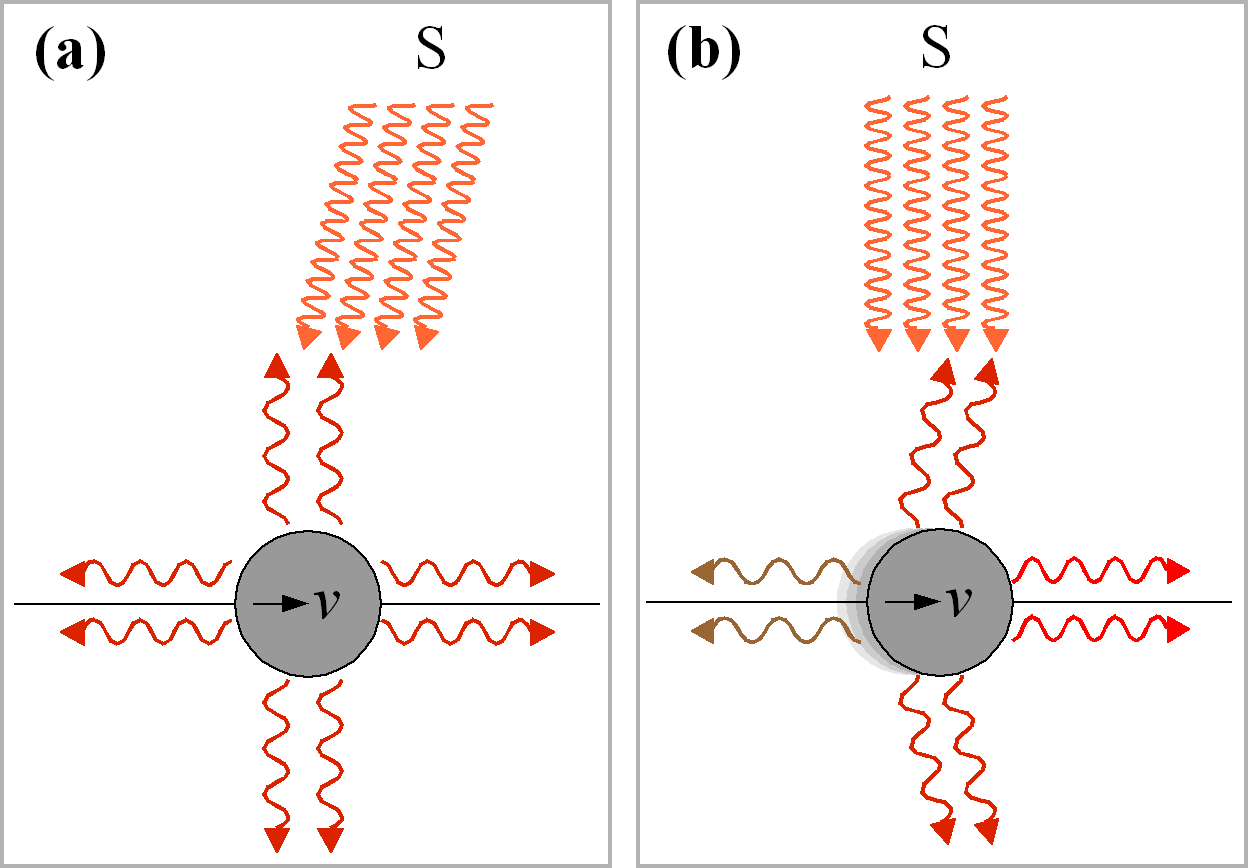
No correlation b/t MIR and NIR excesses found
-
suggests different origin or pile-up of hot grains [14]
- Separately origins for inner and mid?
MIR excesses correlated with cold dust [14]
- Suggests outer region feeds inner through PR drag
- Planet could block dust transport, this could be detectable (LBTI)
Sublimation pile-up
- Dust spirals ins
- Sublimates
- Radiation pressure becomes dominant
- Grain slows its infall
- A pile-up forms at the sublimation radius

However, this has only a small effect on observable signature
Gas drag
- Grains migrate by PR-drag, but are slowed by gas
- The gas could be produced further out in the cold belt
- Gas also extends all the way to the stellar surface
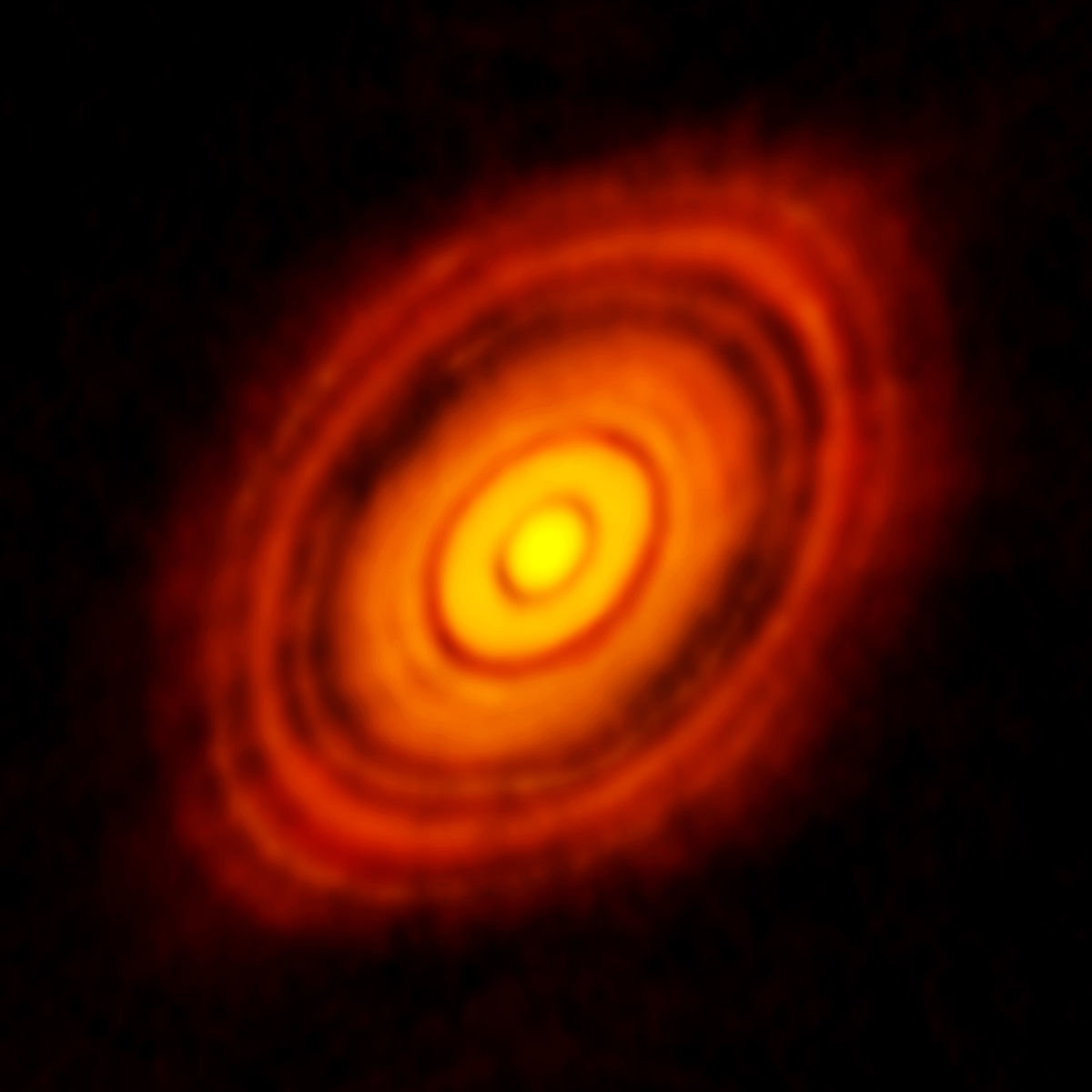
Dynamical instability
- Similar to LHB in SS, produces large amount of dust in NIR and MIR
- Bonsor et al. have shown however, that this dust is too short-lived to explain the occurrence rate of exozodis
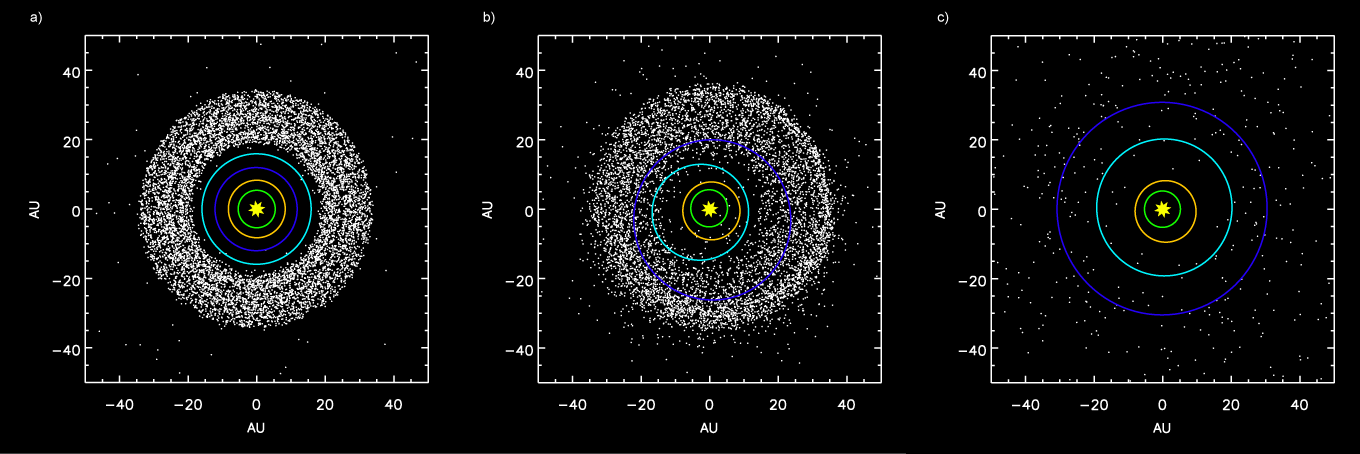

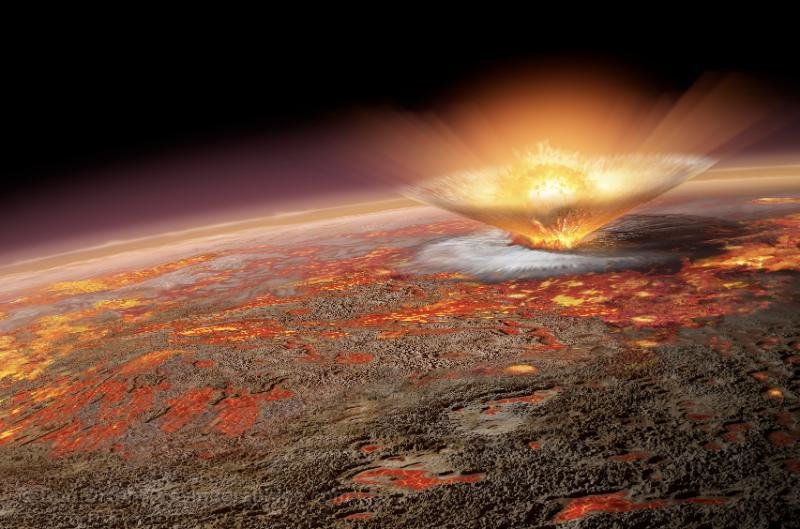
Scattering – by planets/planetesimals
- It moves through the disk, scatters material
- Cold disk feeds inner disk
- Potentially scatters enough material to explain many observed exozodis
Bonsor et al. 2014

MMR (mean-motion resonance)
-
Orbit of comet/planetesimal is pumped to high eccentricity by eccentric planet
-
Bodies get scattered, high sustainable comet infall rate
-
Long time scale (Gyr) and large mass source, capable of explaining SS-like exozodis
-
Same mechanism could trap dust
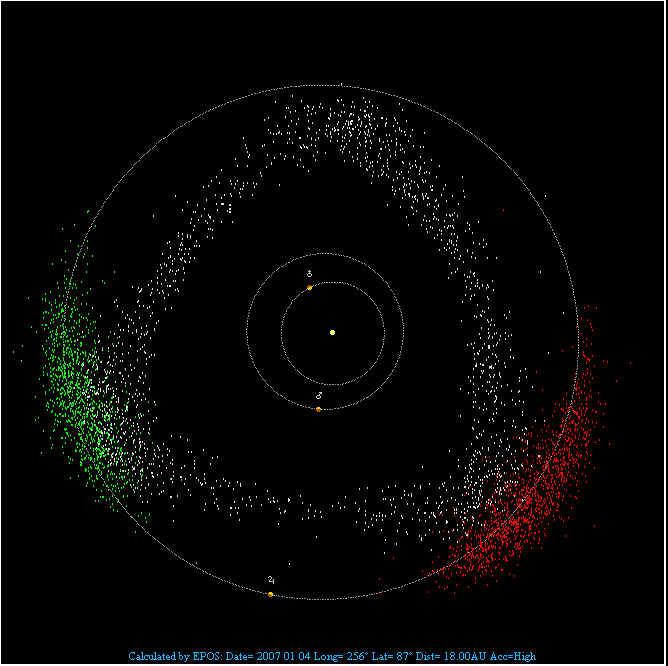

Planetary collisions
- Transient event like that which formed the Moon
- Could explain extreme excesses detected in some systems
- Dust could be observed for ~25 Myr [12,39]
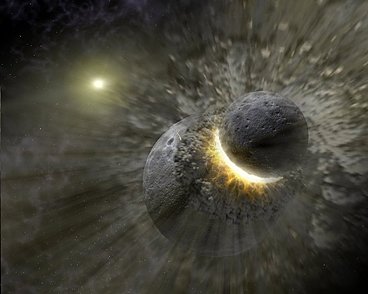
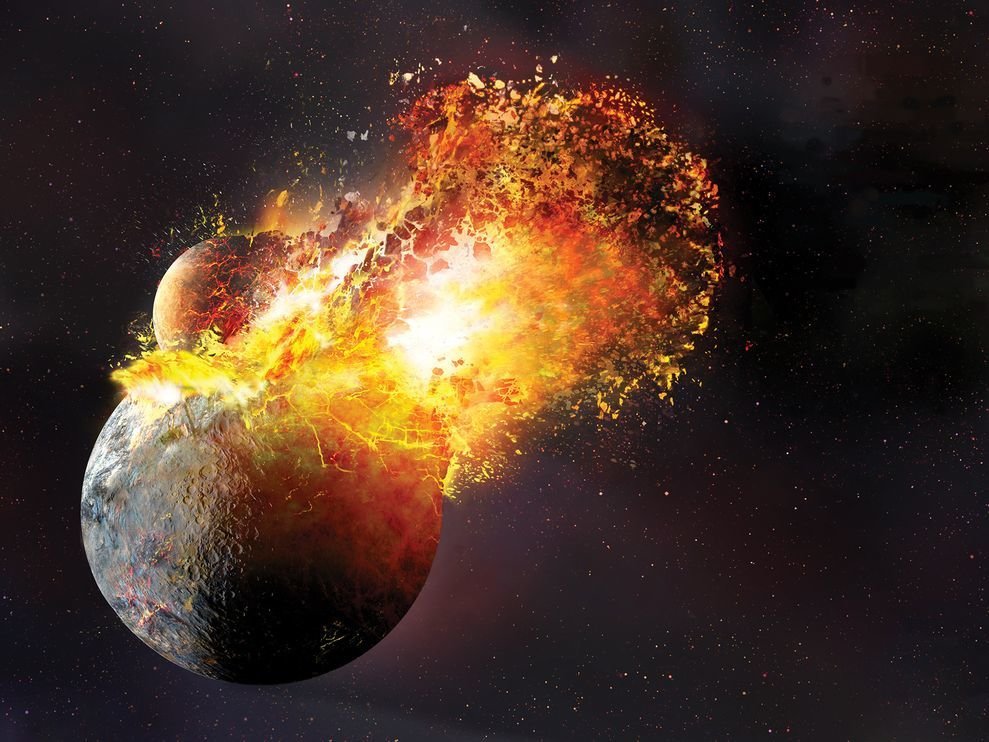

Evaporating planets
- Rocky planets disintegrating
- 3 discovered in Kepler data
- Gaseous outflow and comet-like tail
- Probably too rare to explain most exozodis
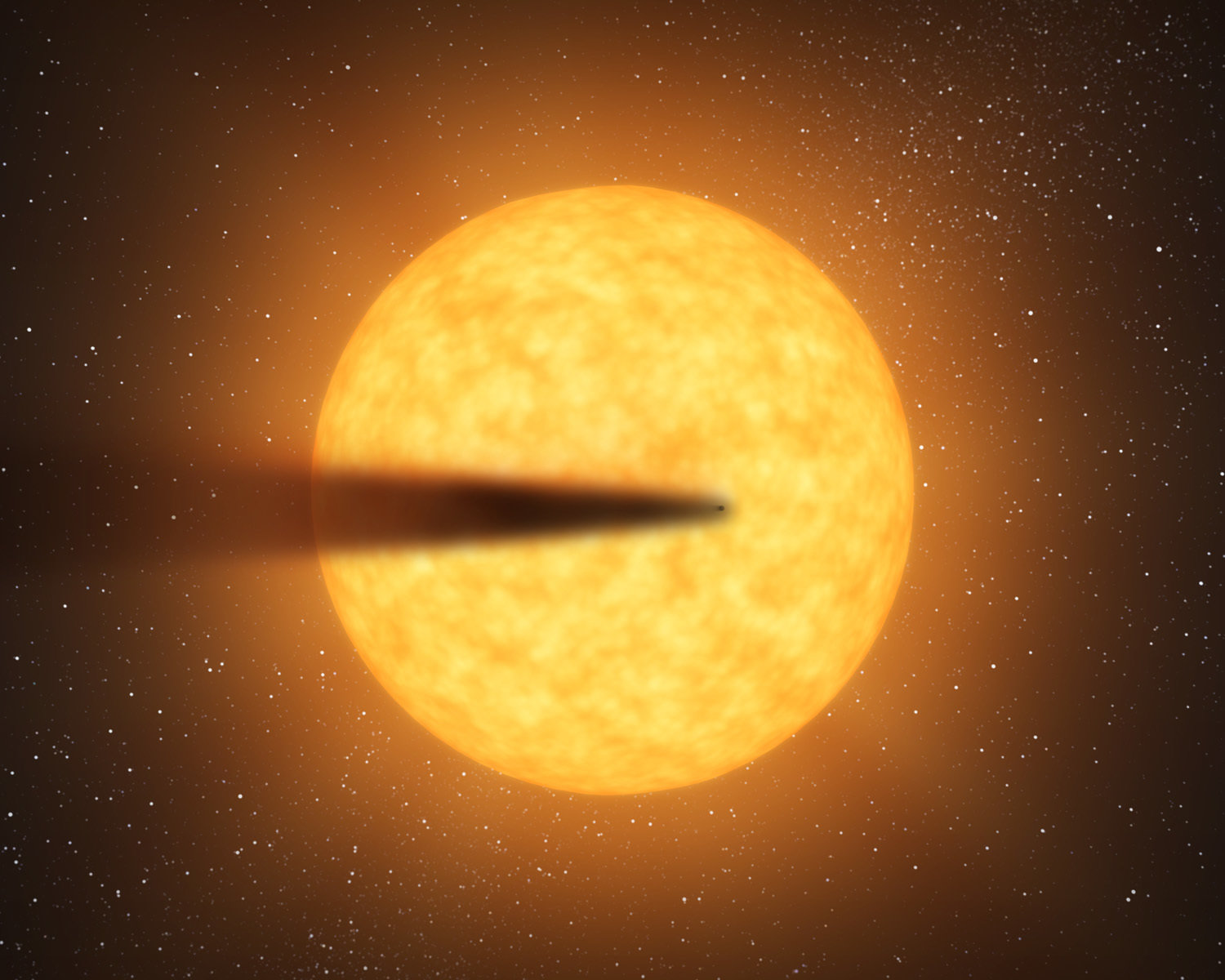
Magnetic trapping
- This gets the level of dust up to that which is observed in NIR
- Submicron grains, charged by photoelectric effect, interact via Lorentz forces [40]
- Magnetic fields are weak for later type stars
- Could be strong enough to trap nanograins
- If magnetic trapping time > than sublimation time, pile-up occurs
- ~5-10 yrs of pile-up needed to produce Fomalhaut’s K-band excess signature [41]
- Grains must surviving radiation pressure and stellar winds long enough to reach nano-size

- Other mechanisms transport dust
- Magnetic fields trap it
- Material piles-up
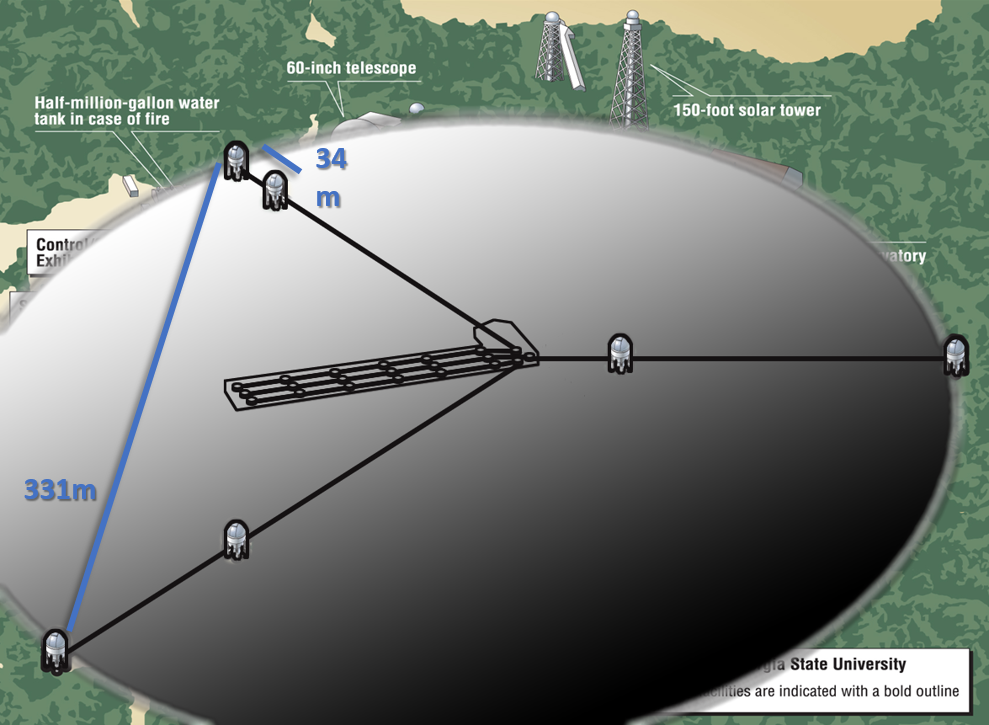
CHARA
FLUOR/JouFLU


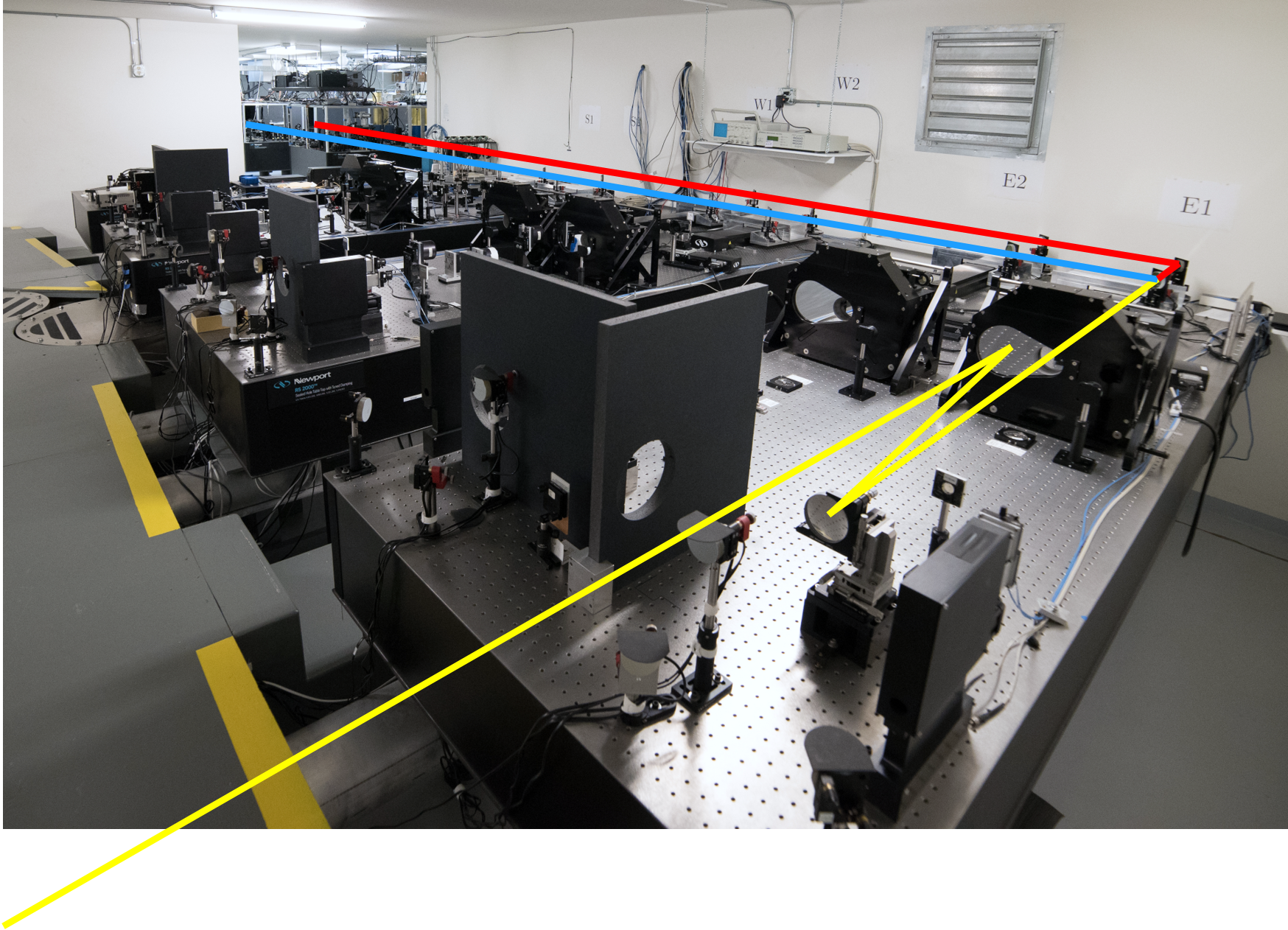
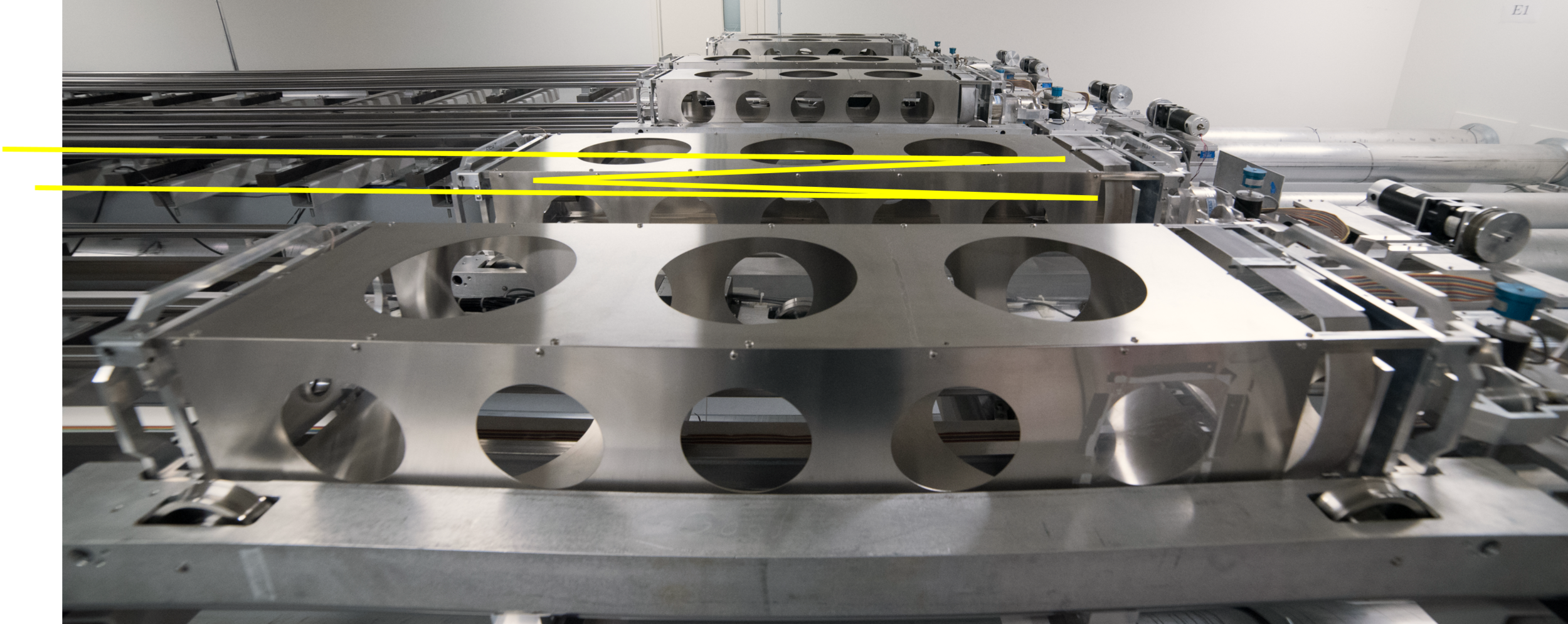

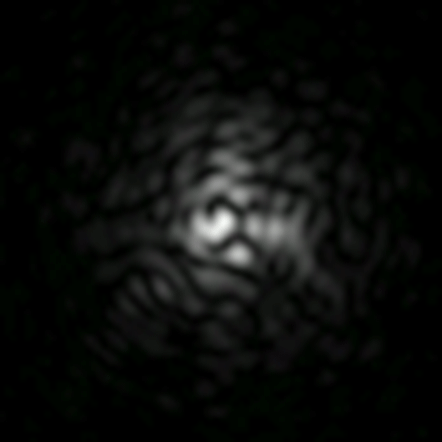
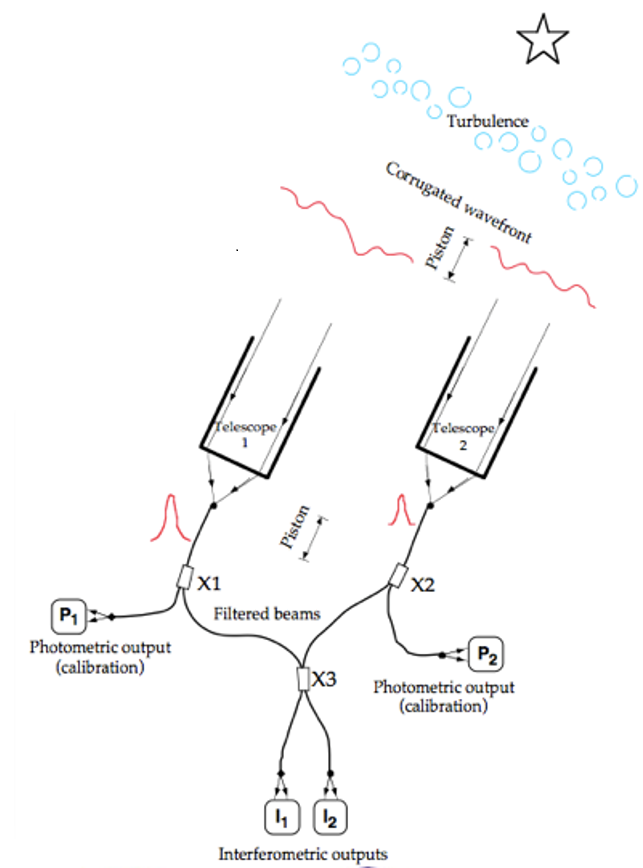


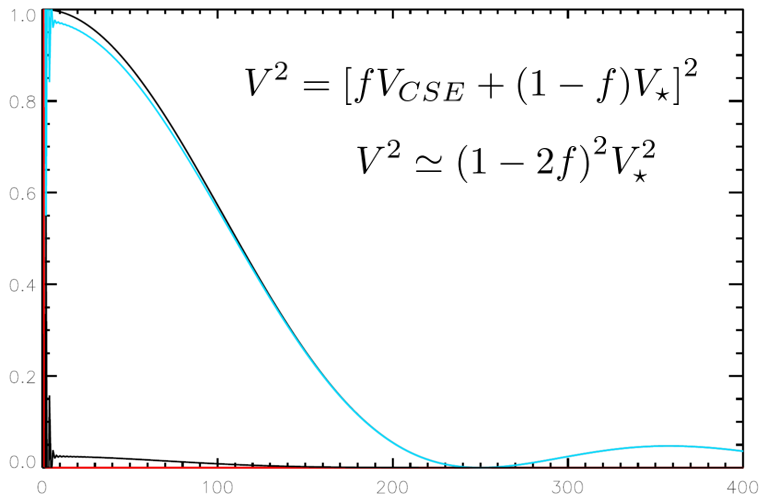
Disk unresolved (> λ/b)
- Incoherent flux
- Visibility deficit on all baselines
- Easiest to detect at short baselines
- Need <1% precision


Defrère et al. (2011)
Disk architecture
- Need very high precision at very short baselines
- Regime between long-baseline interferometry and
aperture-masking - How to reveal
morphology of disk and how dust is changing?
Exozodi Program description
- Near Infrared Exozodi Variability Study (complete) : Revisit 12 of the bright A-K stars with previously detected excesses from the Absil et al. 42 star FLUOR survey.
- Near Infrared Exozodi Survey Extension (complete) : 3 year program observing ≈100 MS A-K stars. Hot dust expected in 30% of systems. Goal is 1% excess detection at 5σ to mK < 5.
- IRTF/SpeX Spectrophotometric Survey : Provide confirmation of dust from NIR excesses, obtain spectra, and develop survey campaign.
- Monitoring of Known Variable Exozodiacal Disks (in progress) : Revisit three stars from the Exozodiacal Variability survey that exhibit a strong near infrared excess. These stars will be observed at least three times during the season.
- Exozodi confirmation (in progress) : Utilize speckle interferometry to confirm hosts of exozodis are point sources. Rule out stellar companion from 25 mas to 2.3”.
Nuñez, Scott, Mennesson et al. 2017
Near Infrared Exozodi Survey Extension
JouFLU observed targets that were fainter in the K-band by about 1 magnitude




Kappa CrB
Text
E1/E2
S1/S2
Altair




1\(\sigma\)

6/33 new circumstellar excesses at \(\geq\)1% level
- 2 of these detections can be attributed to uniform CSE
- 4 are known or suspected binaries.
The difference of between the instrumental noise and the JouFLU significance distribution
yields an estimate of 9 undetected excesses.
Correlation with spectral type or outer reservoir?






We found a tentative correlation with stellar rotation, which supports the magnetic trapping model but is not conclusive.
- After combining the FLUOR and JouFLU samples, detection rate = 15/69 or 22±5%.
- Some excesses appear to be variable and are being monitored by Scott et al.
Conclusions
KIN [14] did not find a 10 µm excess for these targets, implies:
- dust > 1000 K
- grains < 0.1AU (sublimation region)
- grain < 1µm (blow-out size)
Detection rate (-binaries) = 2/29
- incompatible with the rate of 12/41 Absil et al. (2013)
- if we artificially increase the original FLUOR errorbars by 2x, rate = 3/41, which is compatible with the JouFLU detection rate presented here.

Near Infrared Exozodi Variability Study
Dust production mechanism poorly understood
Destruction factors:
- Sublimation
- Radiation Pressure
- Poynting-Robertson (P-R) drag
Models:
- Steady state/continuous replenishment
- Steady state/trapped nano-grains
- LHB & outgassing
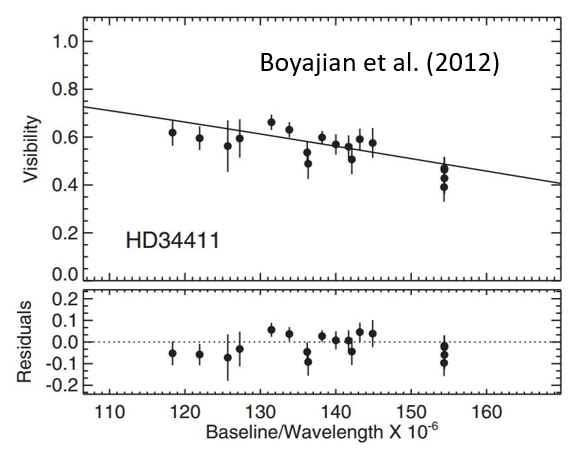
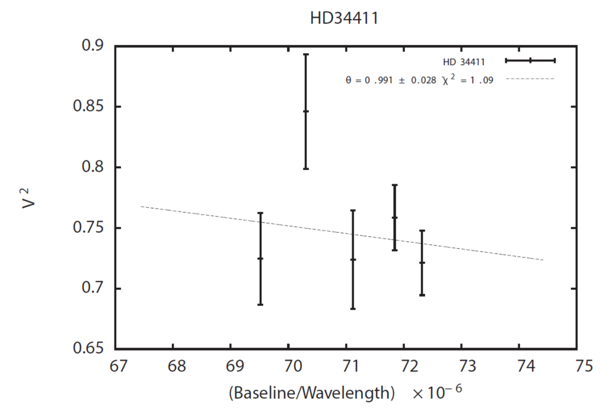

Can we be sure of variability?
- Is instrument stable? Check diameters independently
- DRS stable? Reduce old data with new pipeline
CLASSIC
JouFLU
Excesses detected for some of the targets originally observed by Absil et al. (2013)
- modified instrument, new DRS
- our data for stellar diameters are compatible with known from other beam combiners
- our data for binaries are compatible with expected values
- not an instrumental or data reduction artifact
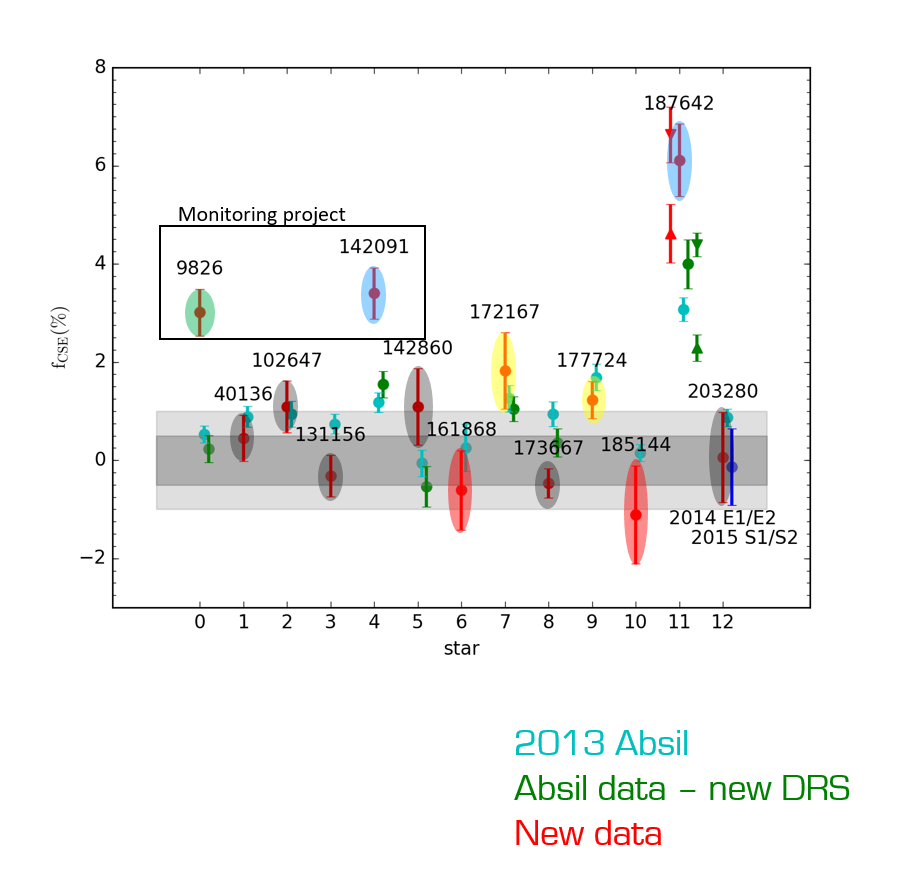
- Excesses not considered significant
- New excess
- Unchanged excess
- Unchanged non-detection
- Increased excesses
Near Infrared Exozodi Variability Study
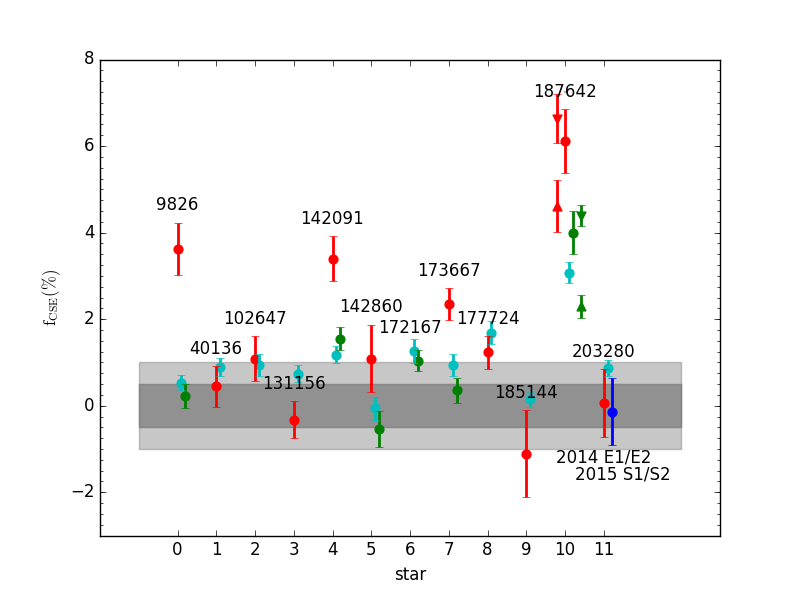
Threshold for detection changed to 1% instead of 0.5%
Monitoring of Known Variable Exozodiacal Disks
HD 9826
- F9V
- 4 planets
- 3 companions in WDS (but 55,114,287”)
- spec binary (M4.5V 55” away)
0.53 ±0.17% FLUOR
10/2013
7/2016
9/2016
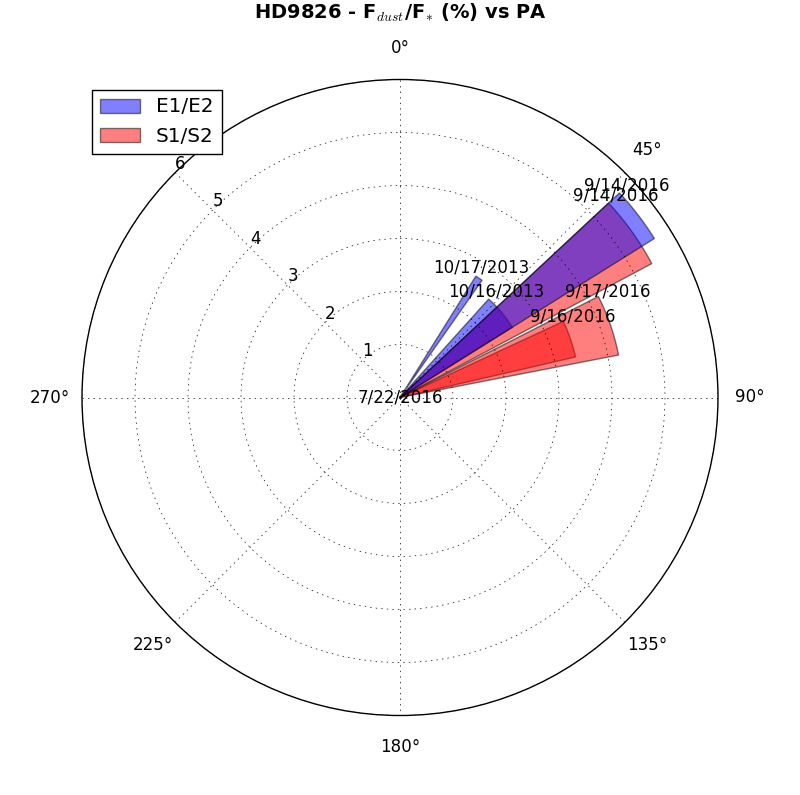

HD142091
- Variability of F\(_{\mathrm{CSE}}\) seems independent of PA
1.18 ±0.2% FLUOR
6/2015
7/2016

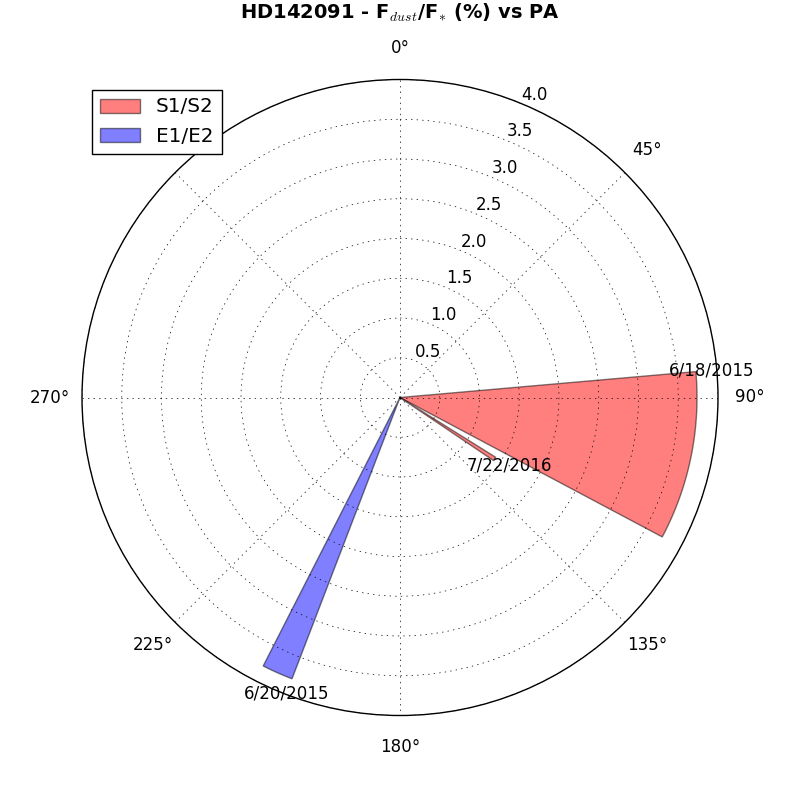
-0.06 ±0.27% FLUOR
HD142860
- F\(_{\mathrm{CSE}}\) changes with PA
- Could be variability of dust
- Could be evidence of inclined disk
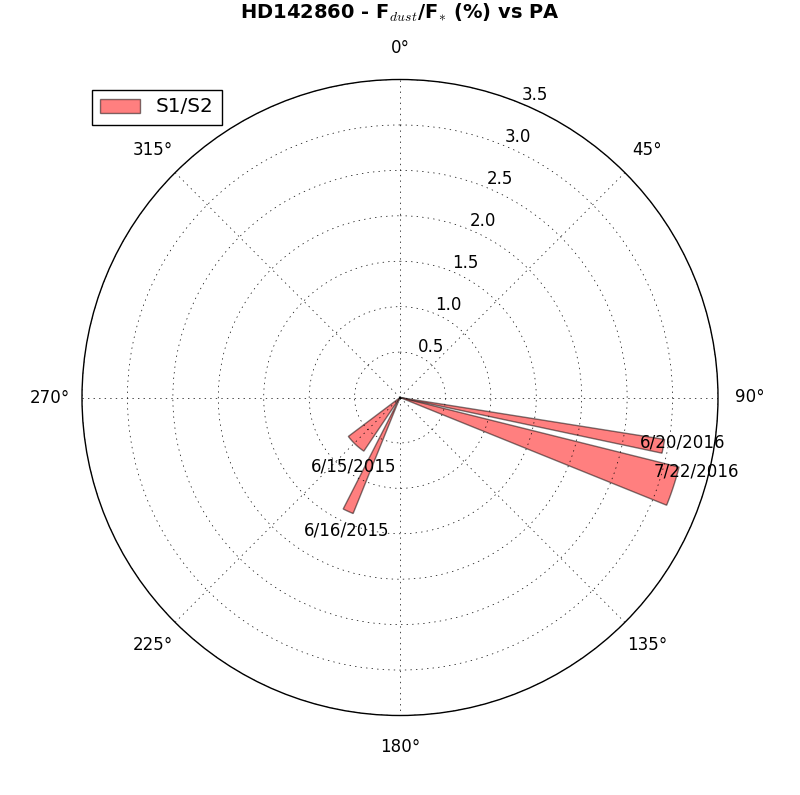
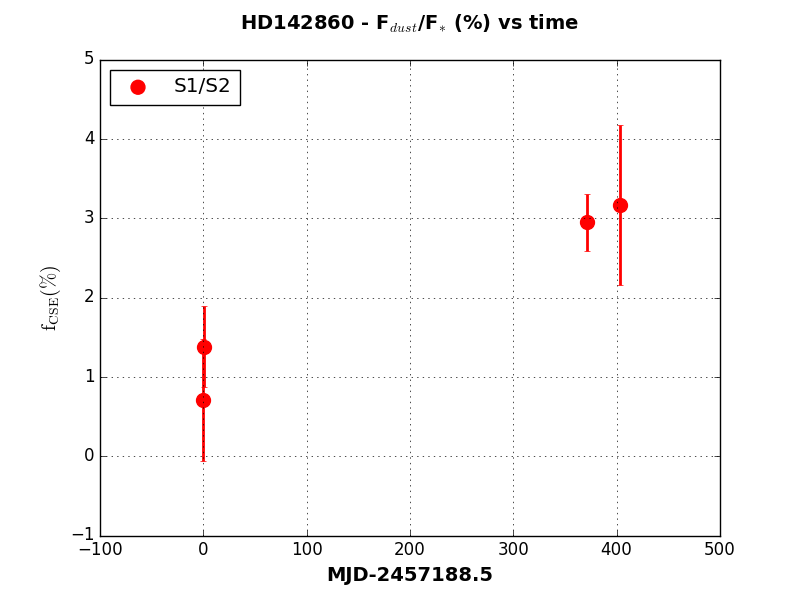
6/2015
7/2016
New Exozodi Monitoring targets
HD 98058
- \(\Phi\) Leo spectra shows signs of exocomet infall and evaporation [45]
HD 210418
- A-type with 1.7 ± 0.5% excess from 2013
HD 222368
-
F-type with 1.3 ± 0.3% excess from 2013
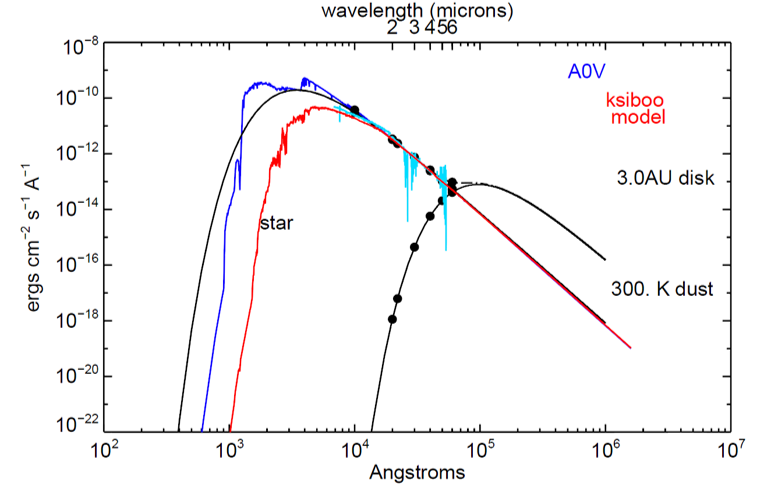
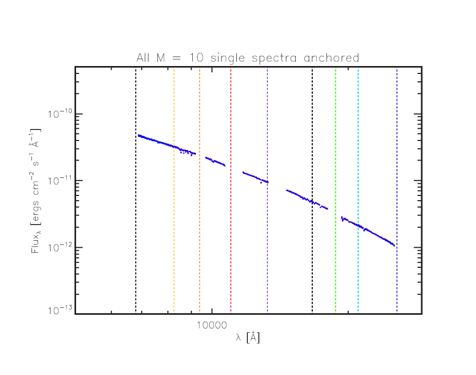

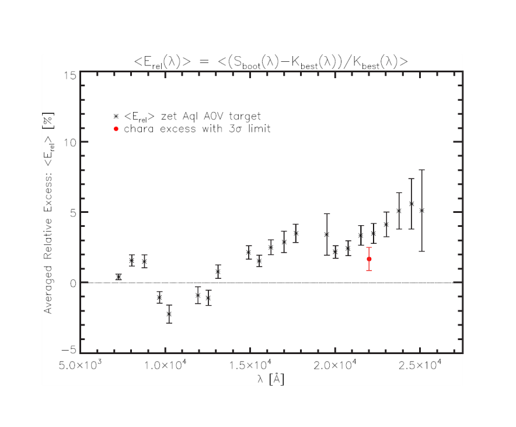

IRTF hot dust
- Record spectra using upgraded SpeX at IRTF from 0.68- 5.3 μm
- Excess stars + control stars, matched by spectral type
- Use λmin to λcutoff to fit a stellar model
- Re-bin the observed spectra Sobs then use its measurement uncertainty n(λ) and the model to compute a mean offset significance from λmin to λcutoff
- Use the derived best-fit photospheric model to compute a mean offset between λcutoff to λmax
Challenges
- Anchoring and scaling the cross-dispersed spectra to precision
- Large parameter space: λcutoff; scaling factors: SXD, LXD, photosphere, slope; stellar model (Teff and log g), and binning
SOFIA FLITECAM –continuous spectrum, 1-5.5 μm
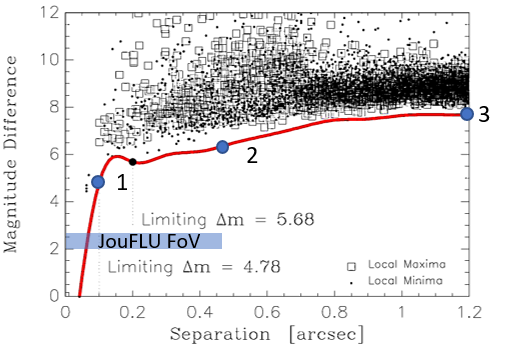

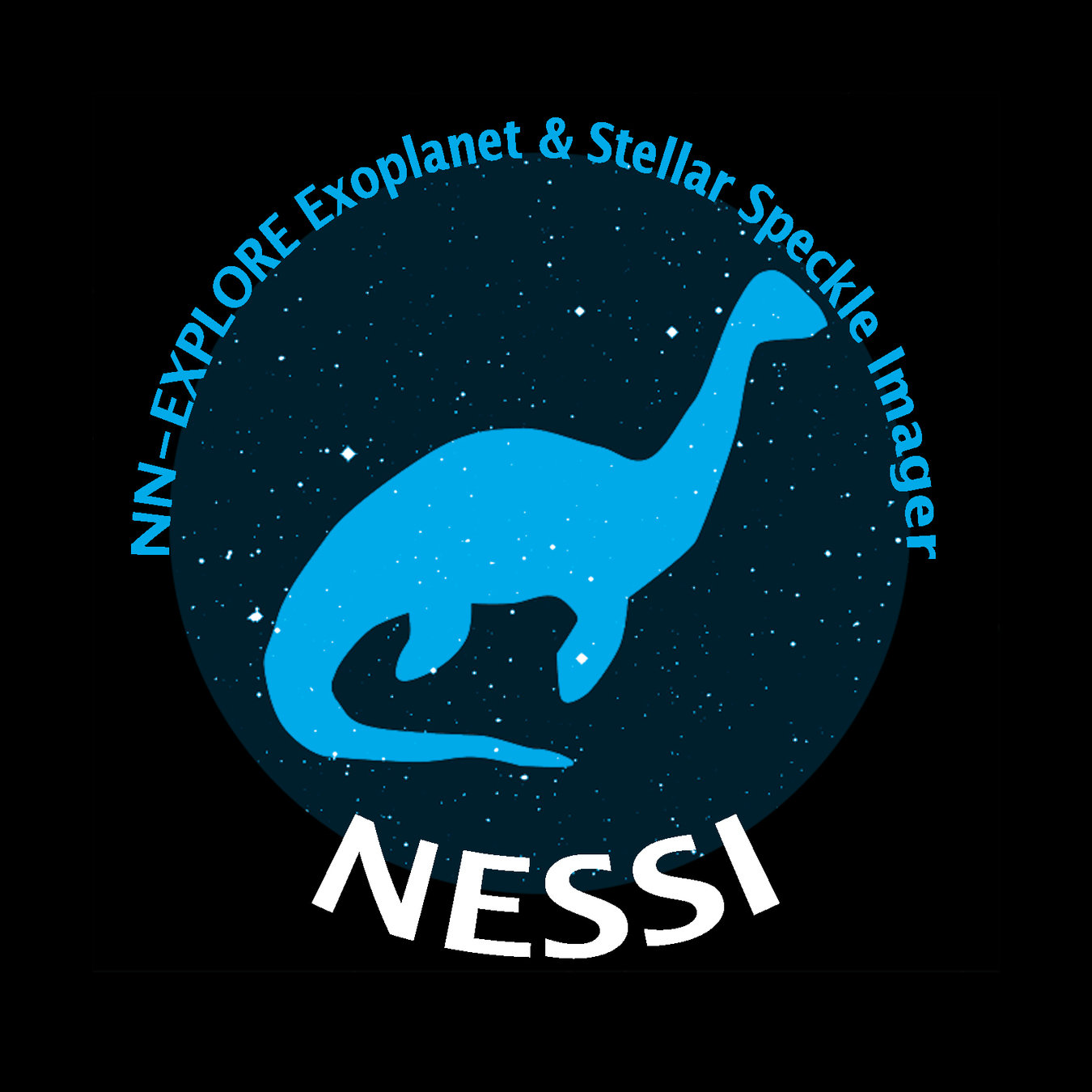
NESSI
- Observations of HD9826 –Oct 2016 at WIYN, <1 min of data
- Constrains the possibility of a faint companion at wide FoV
- Upper limit of the flux ratio at 832nm of a companion located 0.1'' away was found to be 1.6%,
- excludes earlier spectral type than M8V/M9V (T > 2500K).
- 0.4% at the extent of the JouFLU's FoV (T=2100K)
- 0.06% at the extent of NESSI's FoV (T=1700K)

110 Her
Ups And
1
2
3
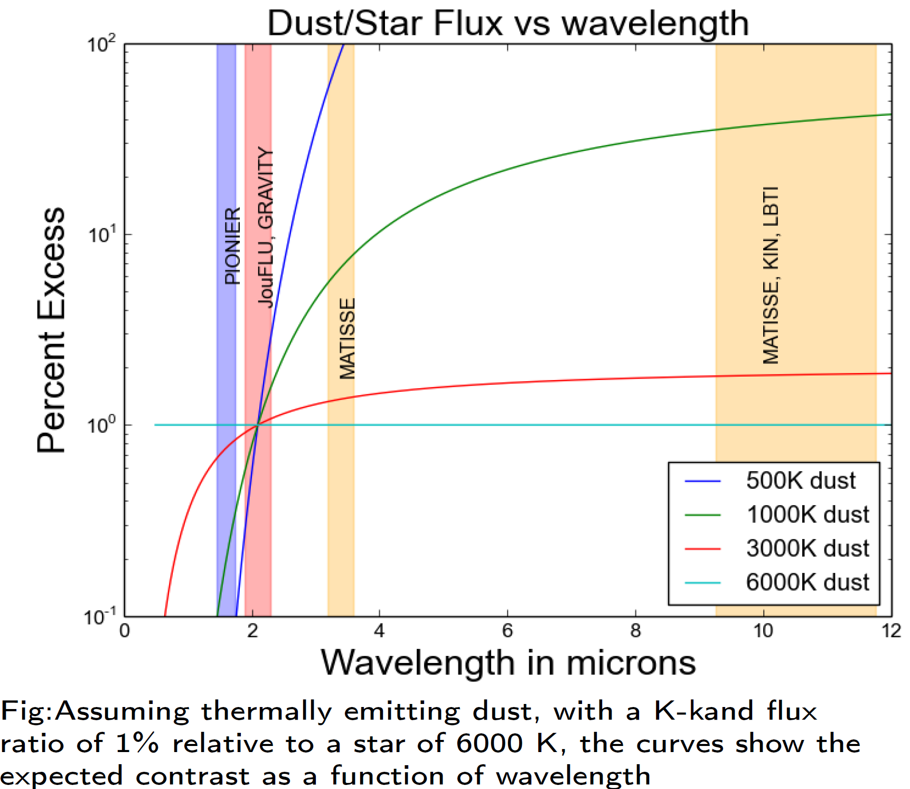
Future
-
LBTI
- HOSTS
- Occurrence of dust
- Faint limit
- ZESTY
- Correlation with cold disks
- HOSTS
- VLTI
- Gravity
- MATISSE
- CHARA
- JouFLU

Kral et al. 2017
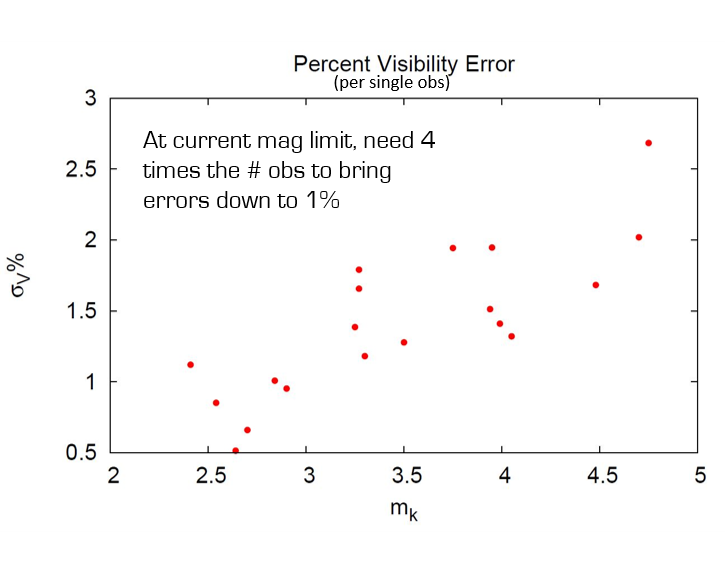

JouFLU upgrade paths
Goal is to access more exozodi targets
- Replace MONA
-
- New fibers or IO (GRAVITY)
- Increase spectral dispersion
- Replace NICMOS
- Selex SAPHIRA? PICNIC?
- Add Fringe-tracker
- Make a nuller
Getting to 5th mag could more than double the number of targets observable
Other possibilities:
- Observe with MYSTIC, MIRCx?
- Observe with SPICA?
- Aperture mask on 8+ m telescope
Get closure phase, rule out companions, determine if scattered or thermal emission
References
[1] Kelsall et al. 1998
[2] Beichman et al. 2006 ApJ 652
[3] Roberge et al. 2012
[4] Defrère et al. Proc. SPIE 2012
[5] Stark et al. 2014
[6] Kennedy & Wyatt 2013
[7] Wyatt et al. 1999
[8] Fajardo-Acosta et al. 2000
[9] Mannings & Barlow 1998
[10] Laureijs et al. 2002
[11] Lawler et al. 2009
[12] Wyatt et al. 2007 ApJ 658
[13] Defrère et al. 2015
[14] Mennesson et al. 2014
[15] Absil et al. 2013
[16] Ciardi et al. 2001
[17] di Folco et al. 2004
[18] Absil et al. 2006
[19] di Folco et al. 2007
[20] Absil et al. 2008b
[21] Akeson et al. 2009
[22] Absil et al. 2009
[23] Defrère et al. 2011
[24] Mennesson et al. 2011a
[25] Mawet et al. 2011
[26] Lisse et al. 2012
[27] Weinberger et al. 2011
[28] Defrère et al. 2012a
[29] Lisse et al. 2013
[30] Ertel et al. 2014
[31] Marion et al. 2014
[32] Nuñez et al. 2017
[33] Kral et al. 2013
[34] Krivov et al. 2006
[35] Wyatt et al. 2007 ApJ 663
[36] Defrère et al. 2012 A&A 546
[37] Marshall et al. 2016
[38] van Lieshout et al. 2014 A&A 571
[39] Jackson et al. 2012
[40] Rieke et al. 2016
[41] Su et al. 2016
[42] Wyatt et al. 2008
[43] Su et al. 2013
[44] Lebreton et al. 2013
[45] Eiroa et al. 2016, A&A 594, Oct 2016
[46] Faramaz et al. 2016